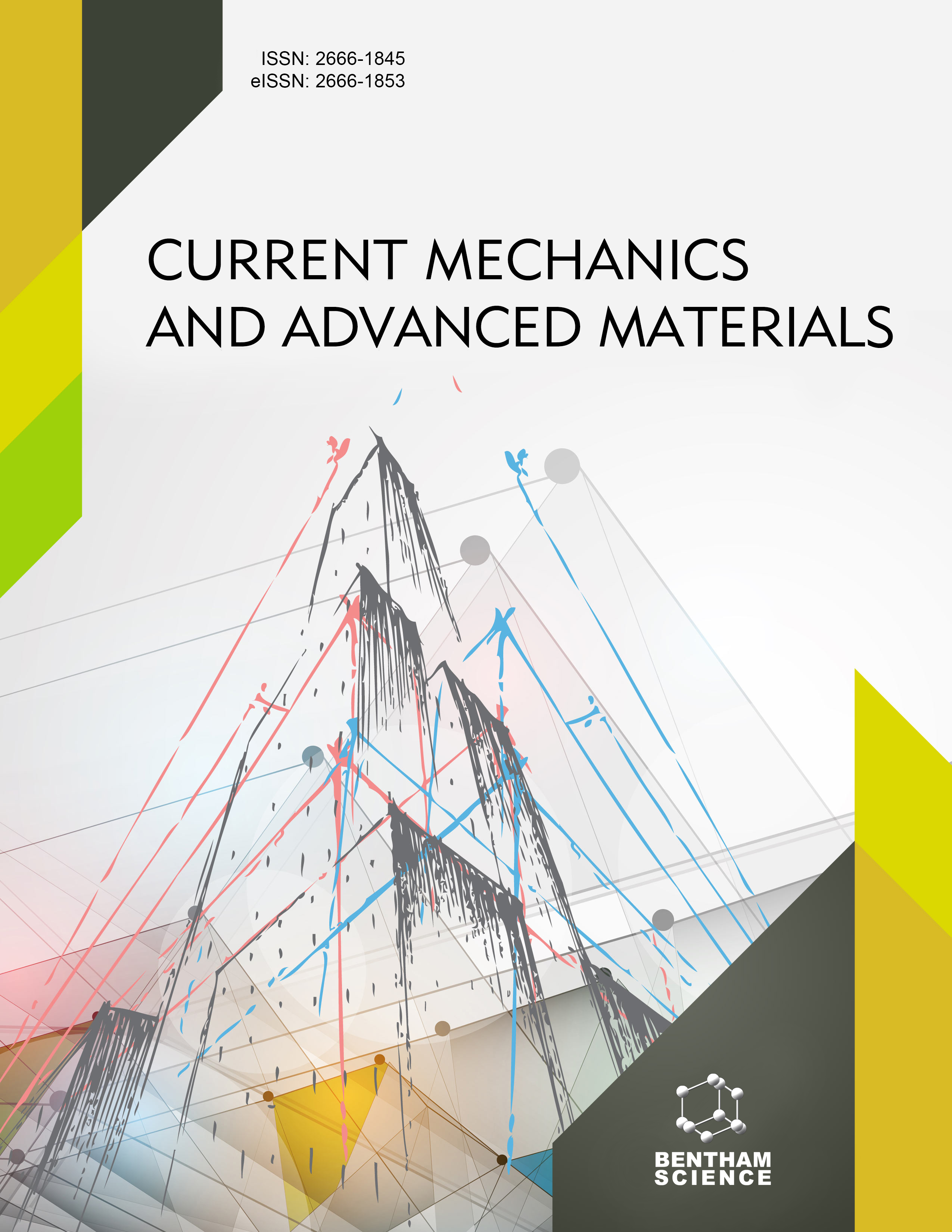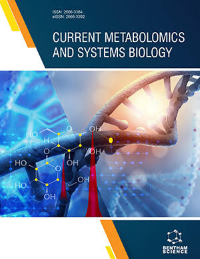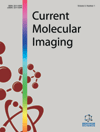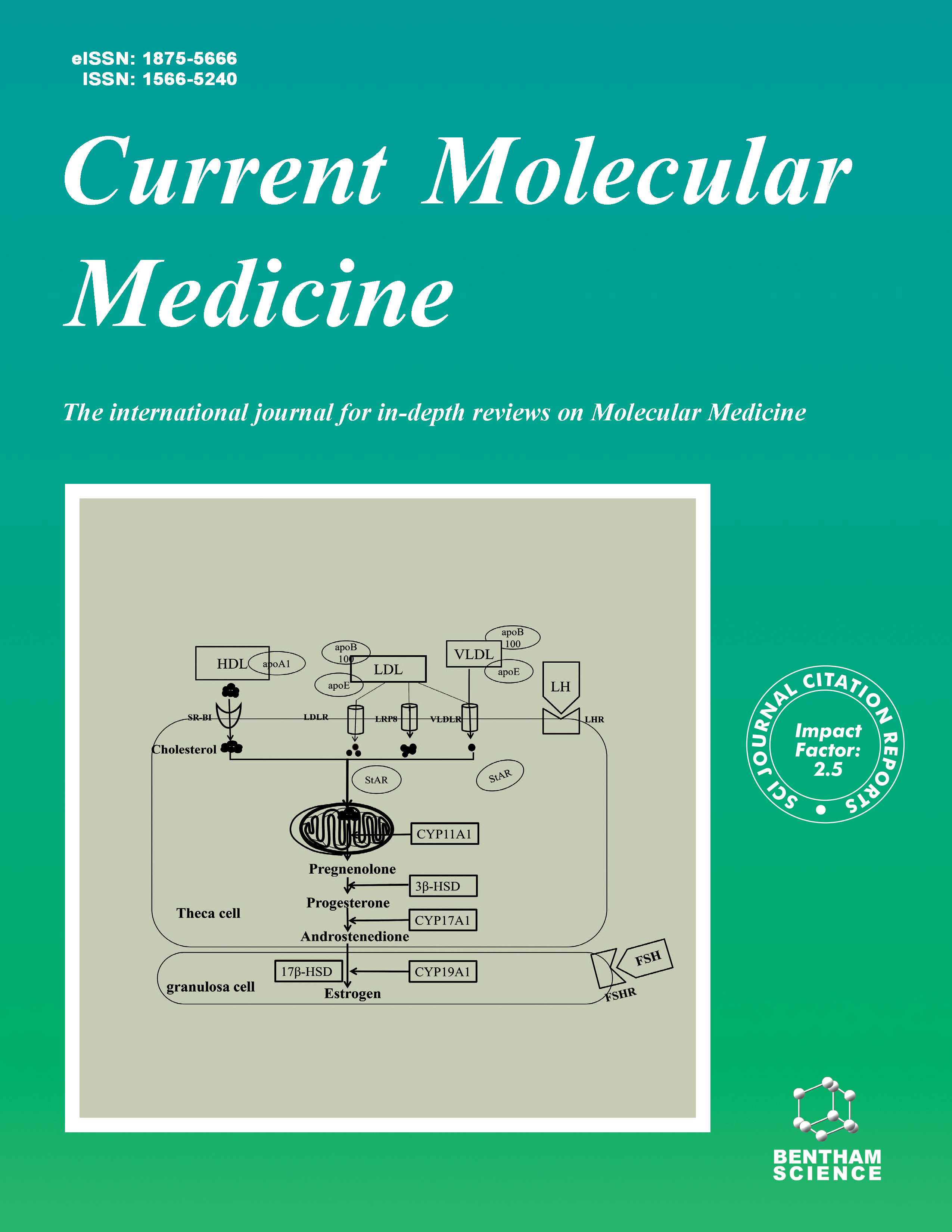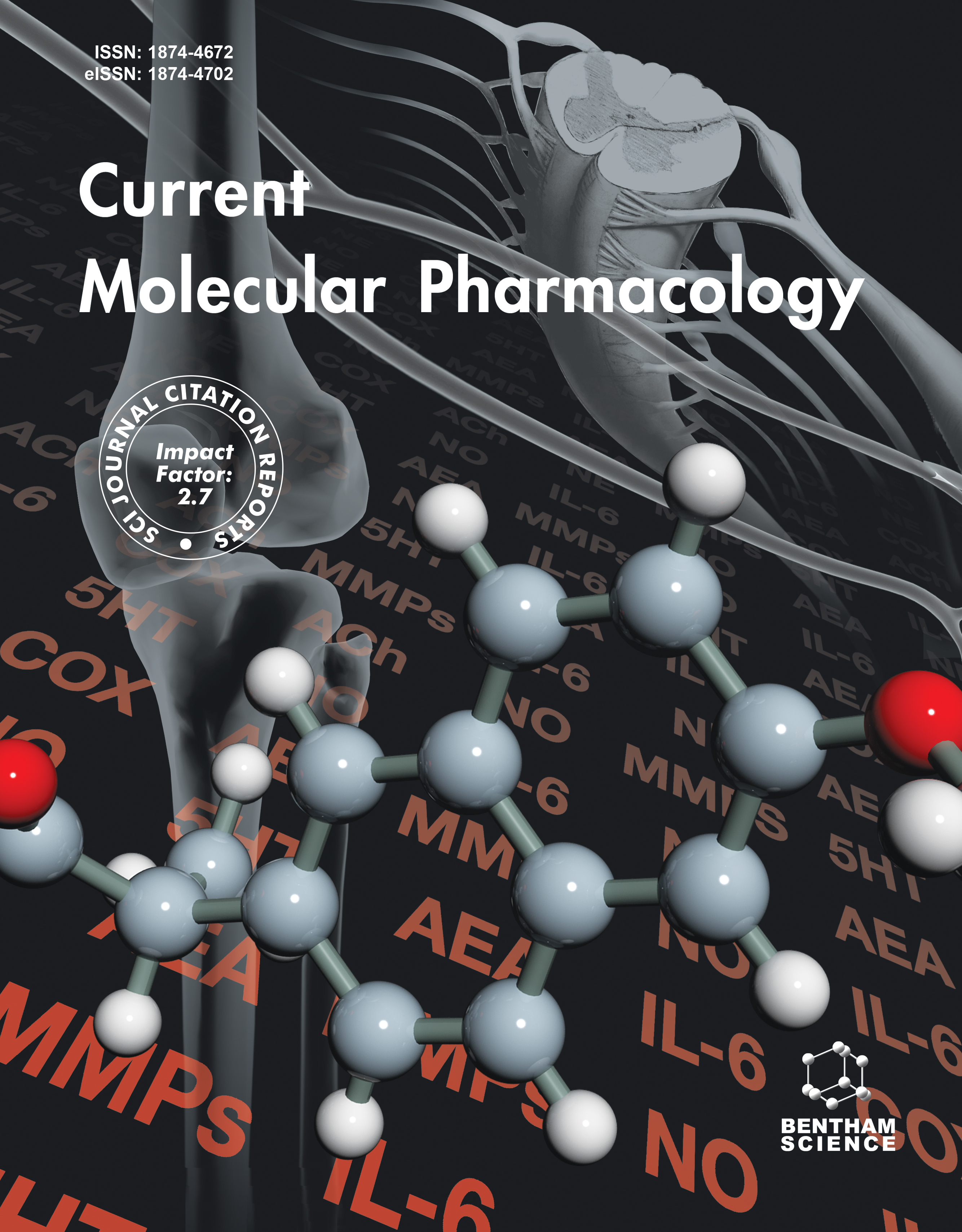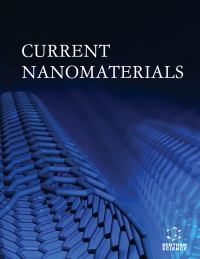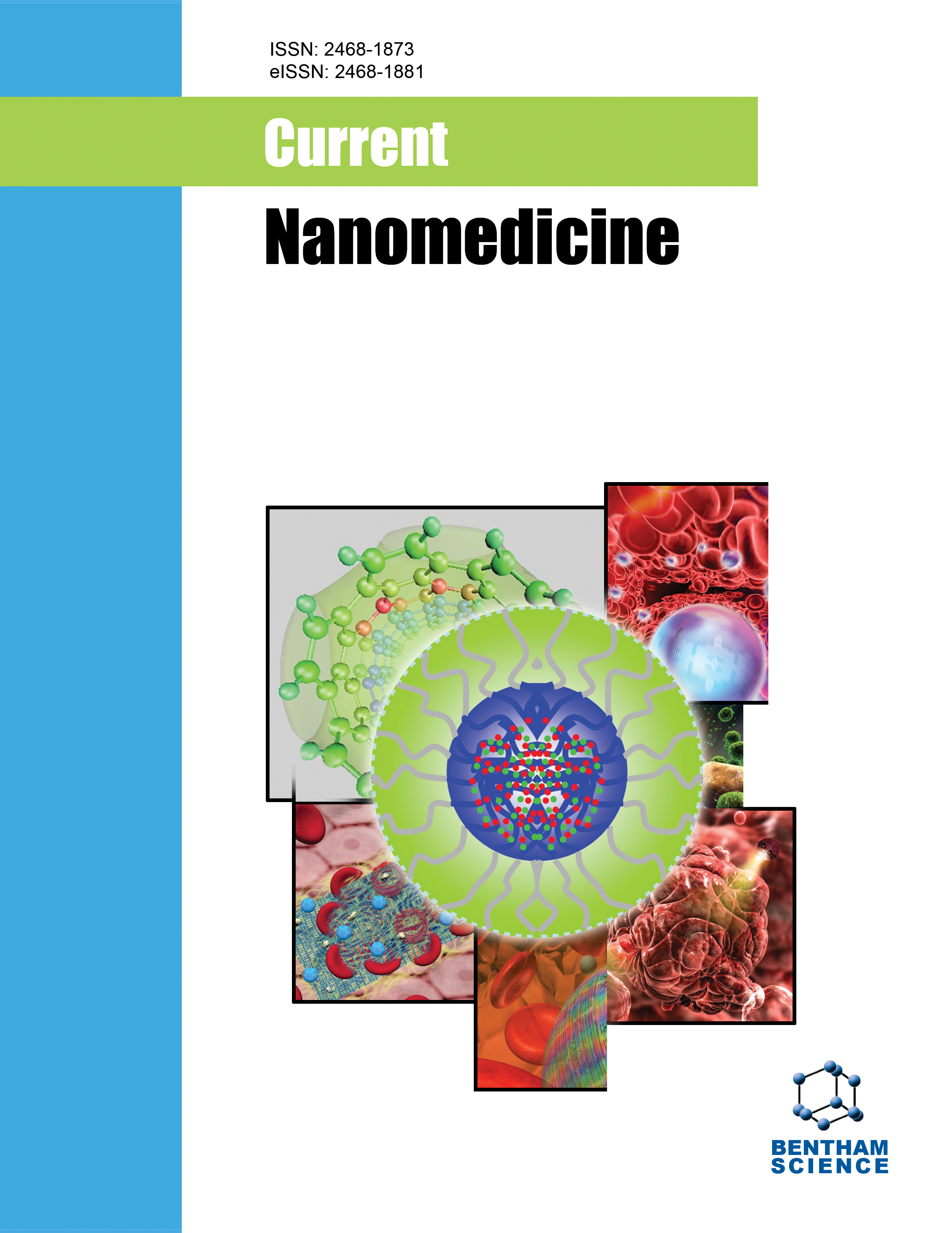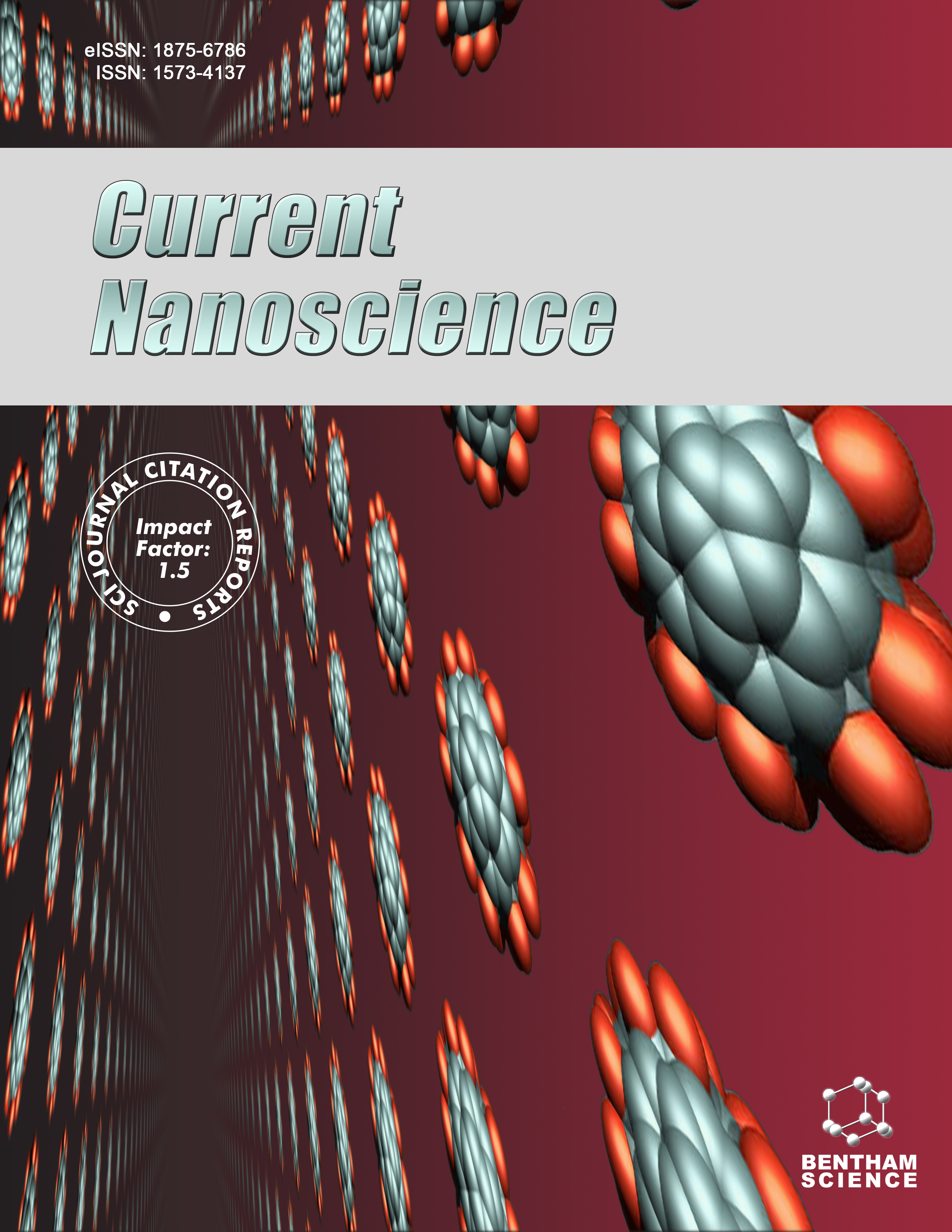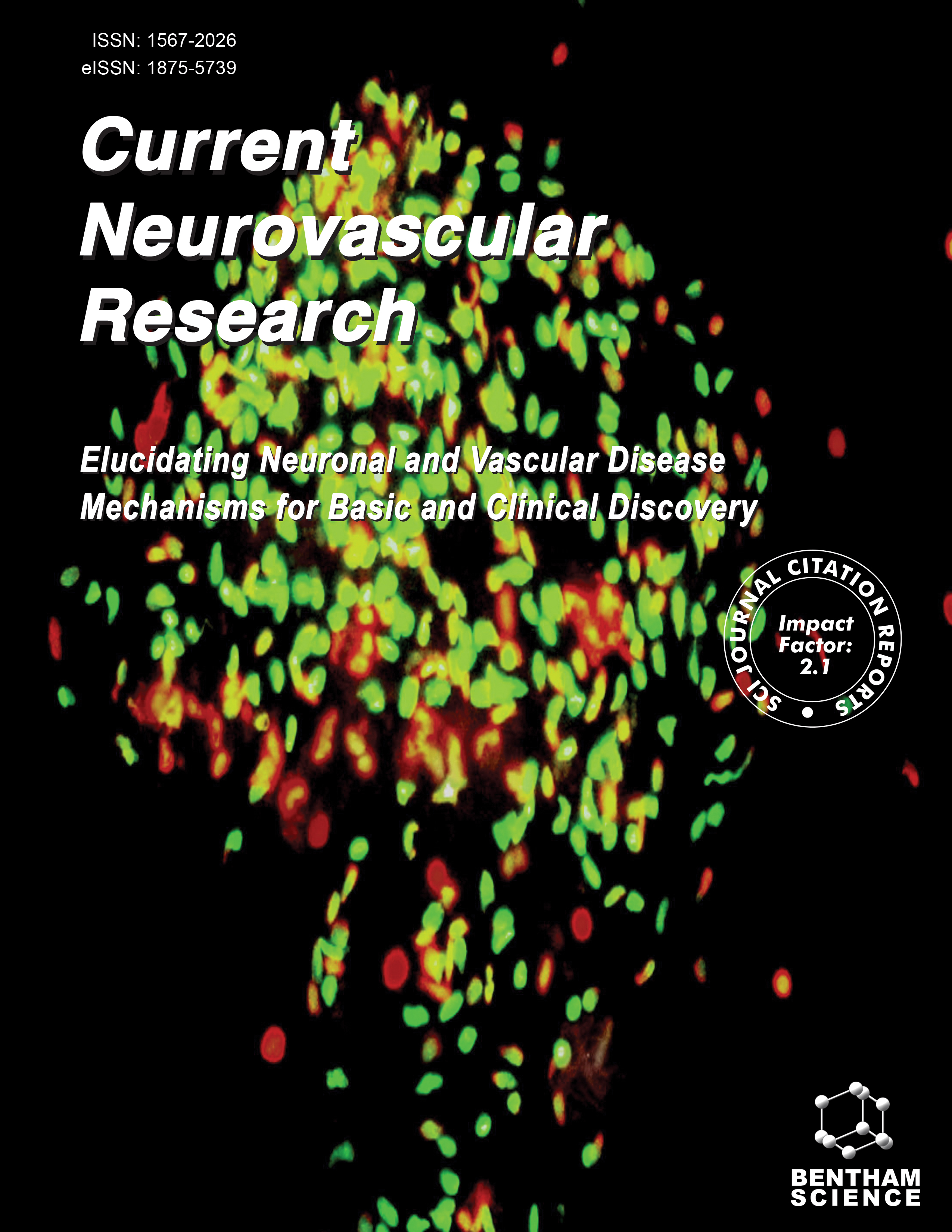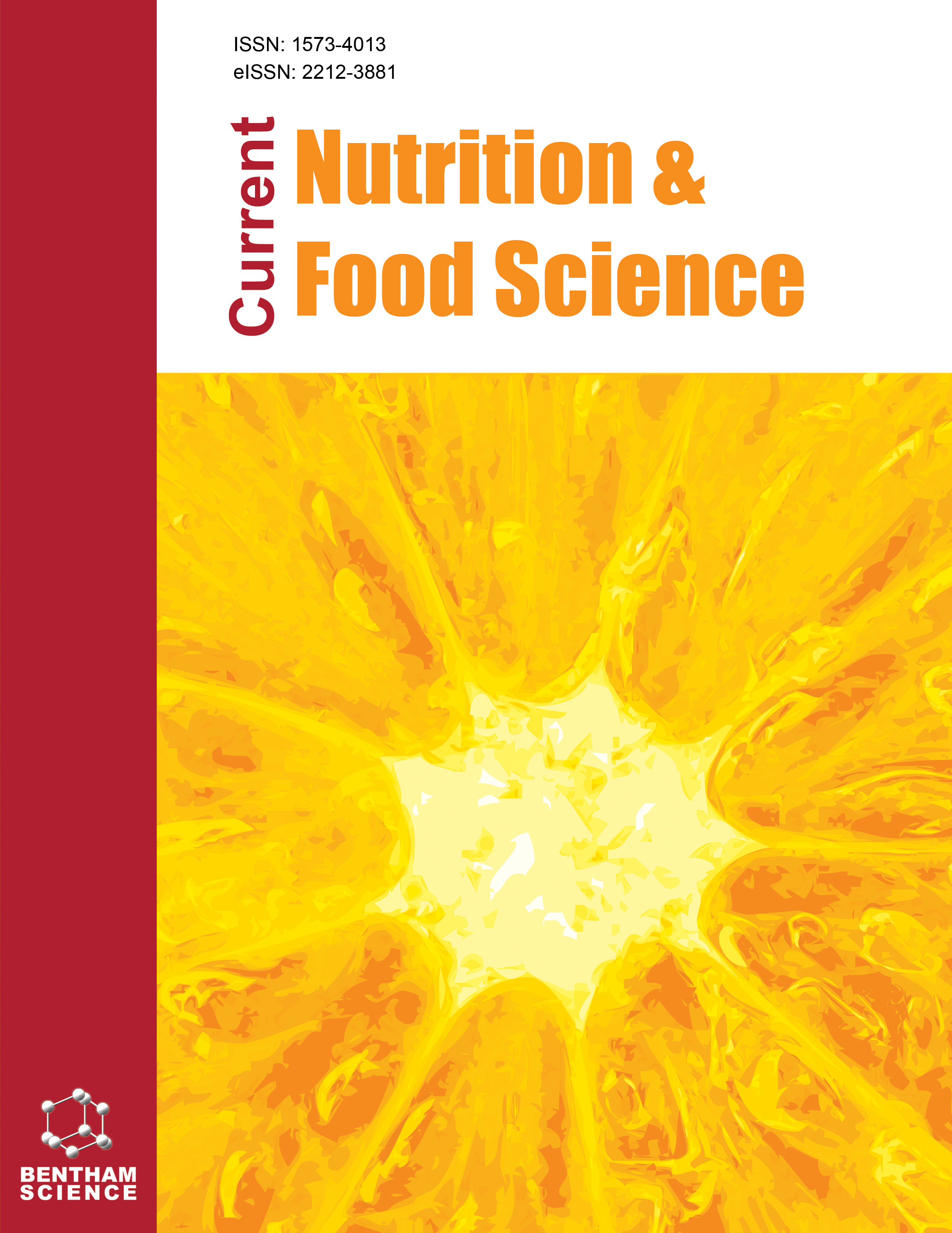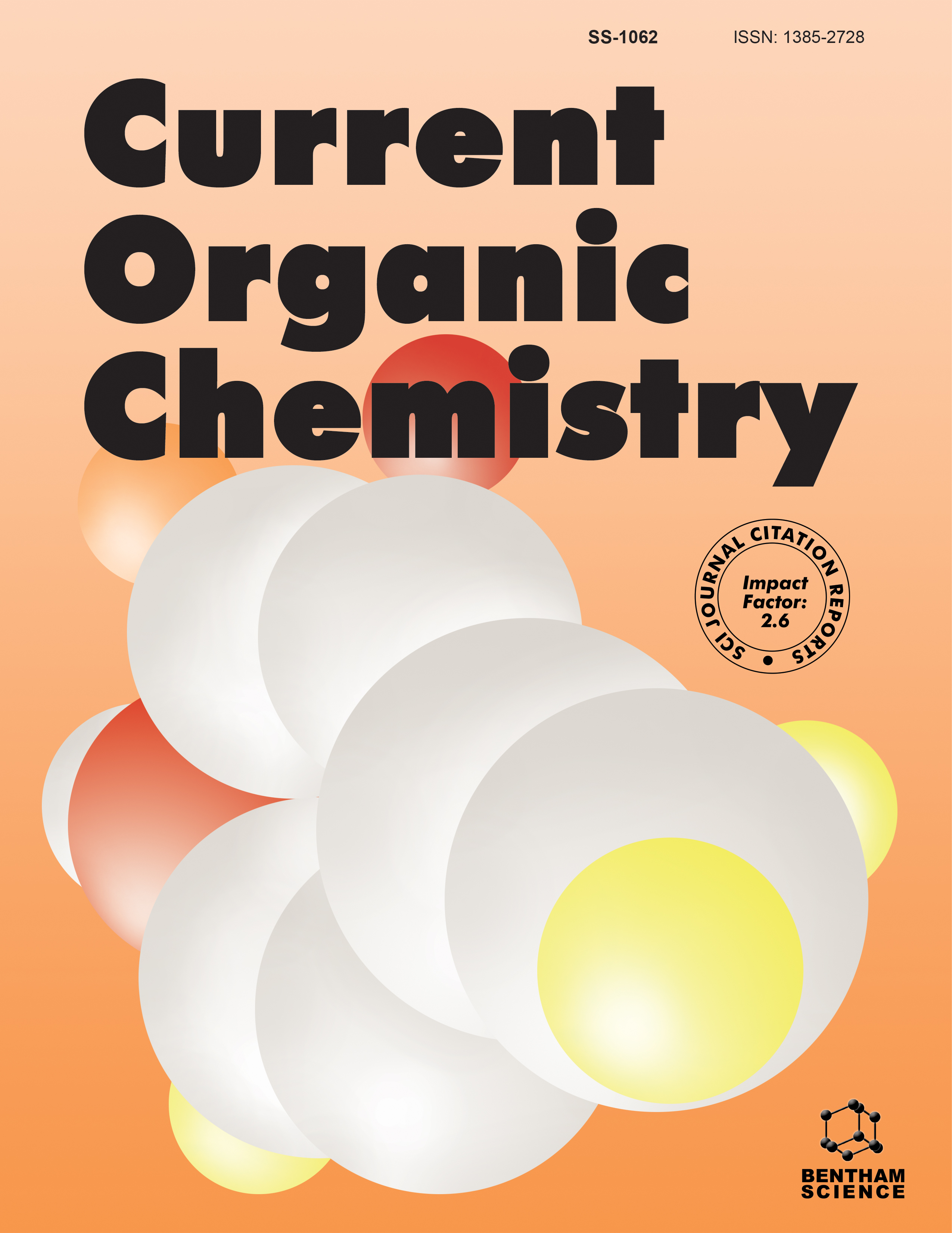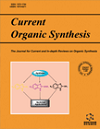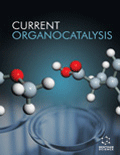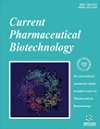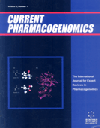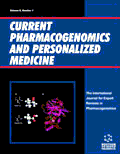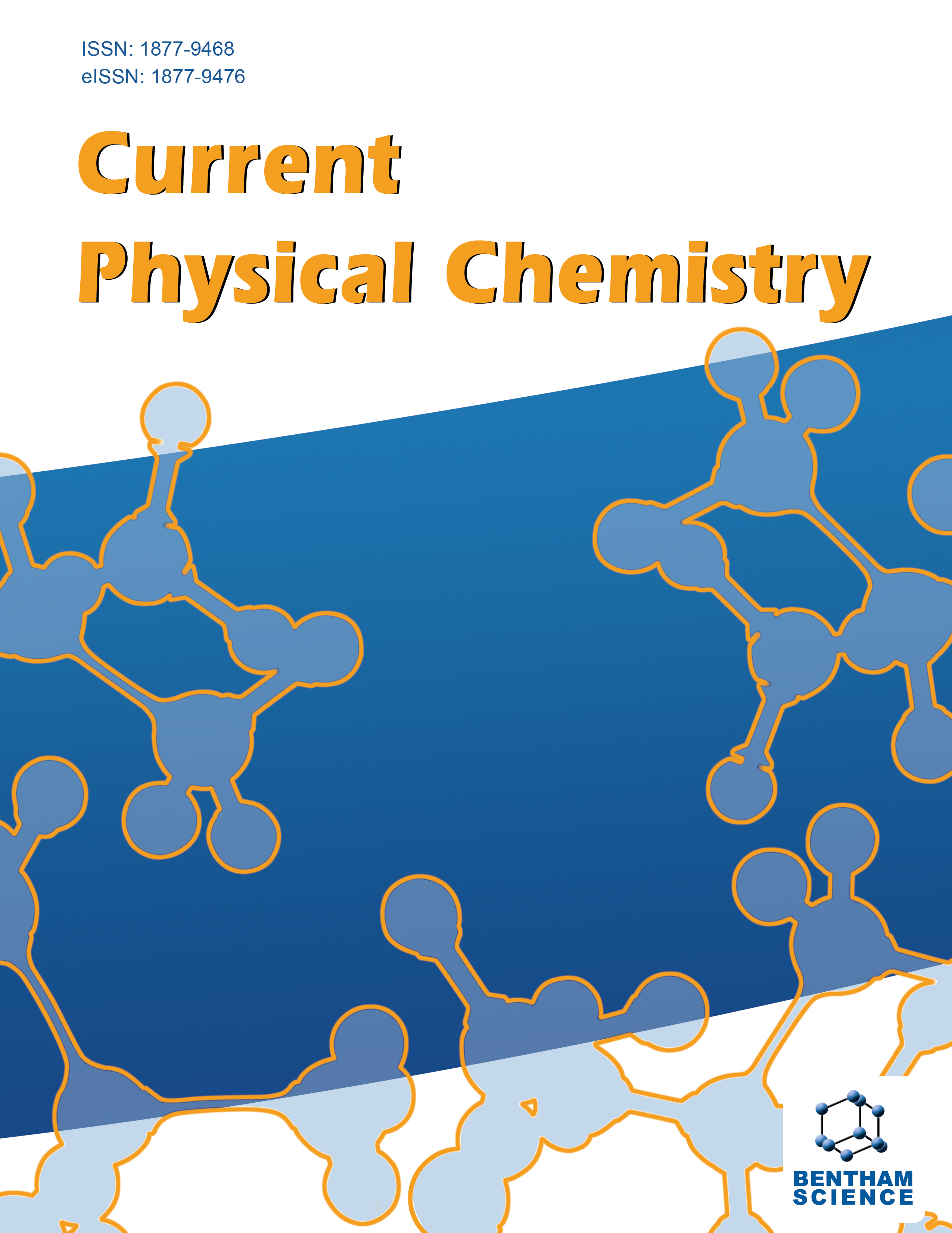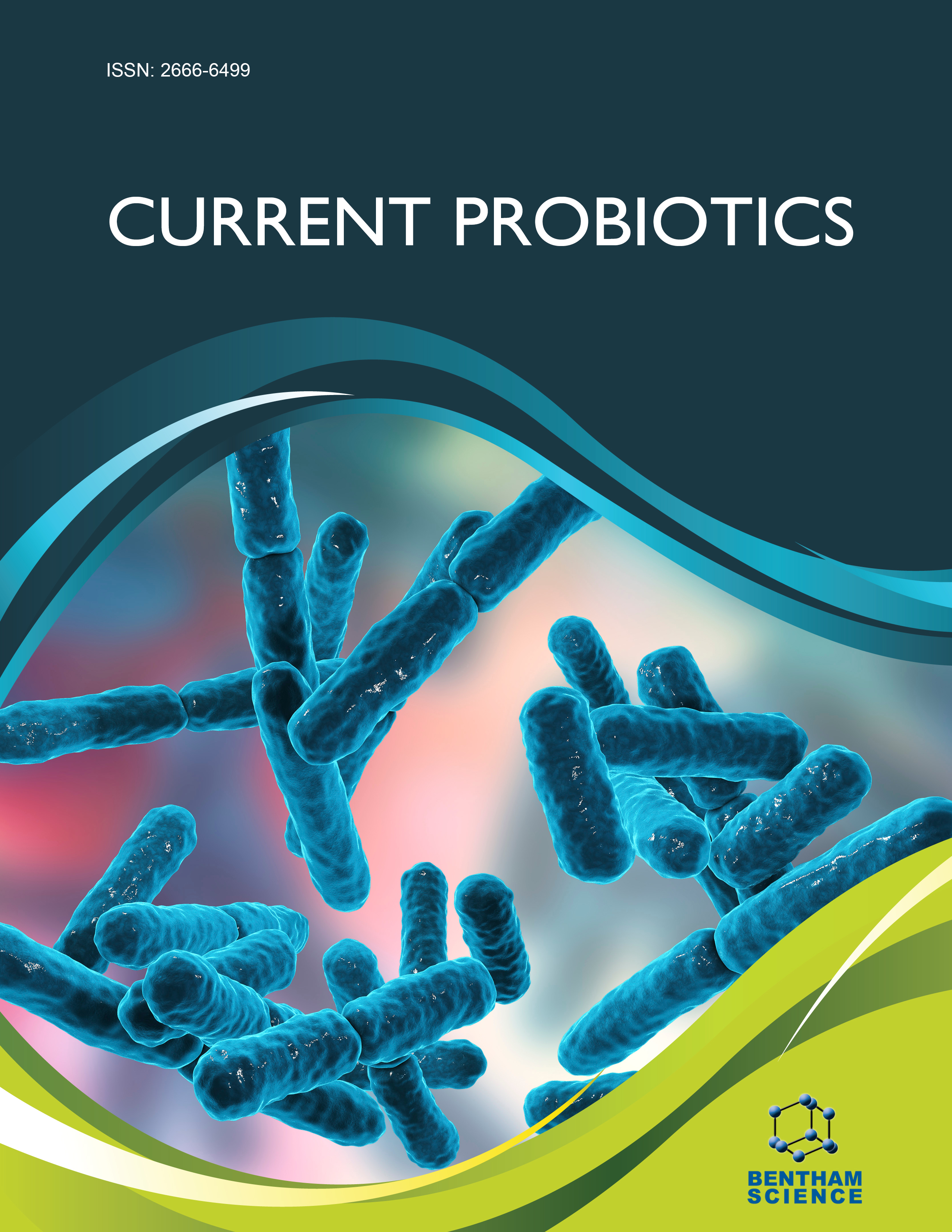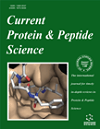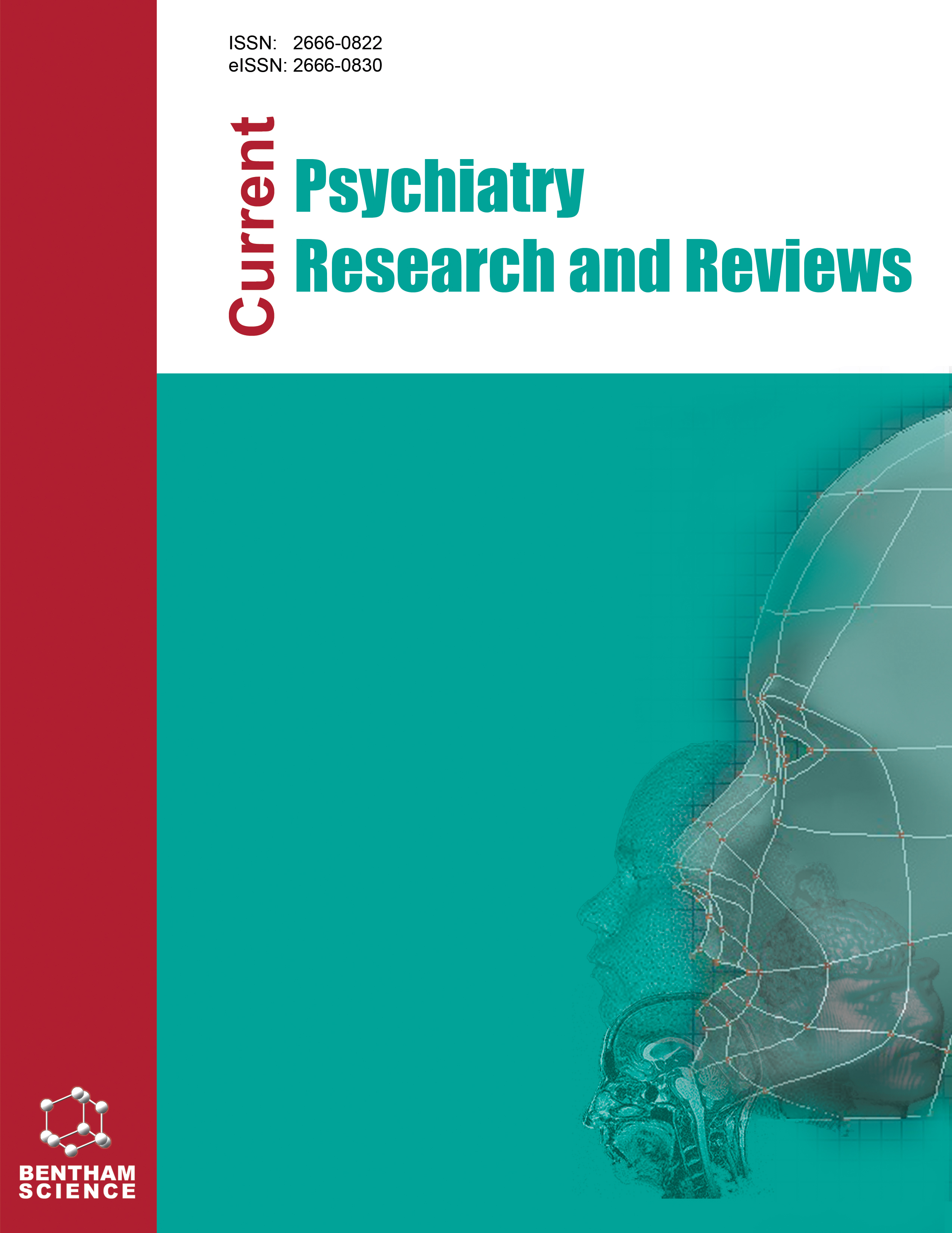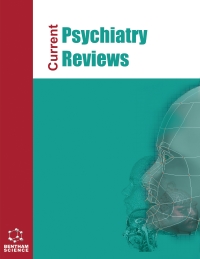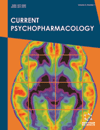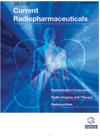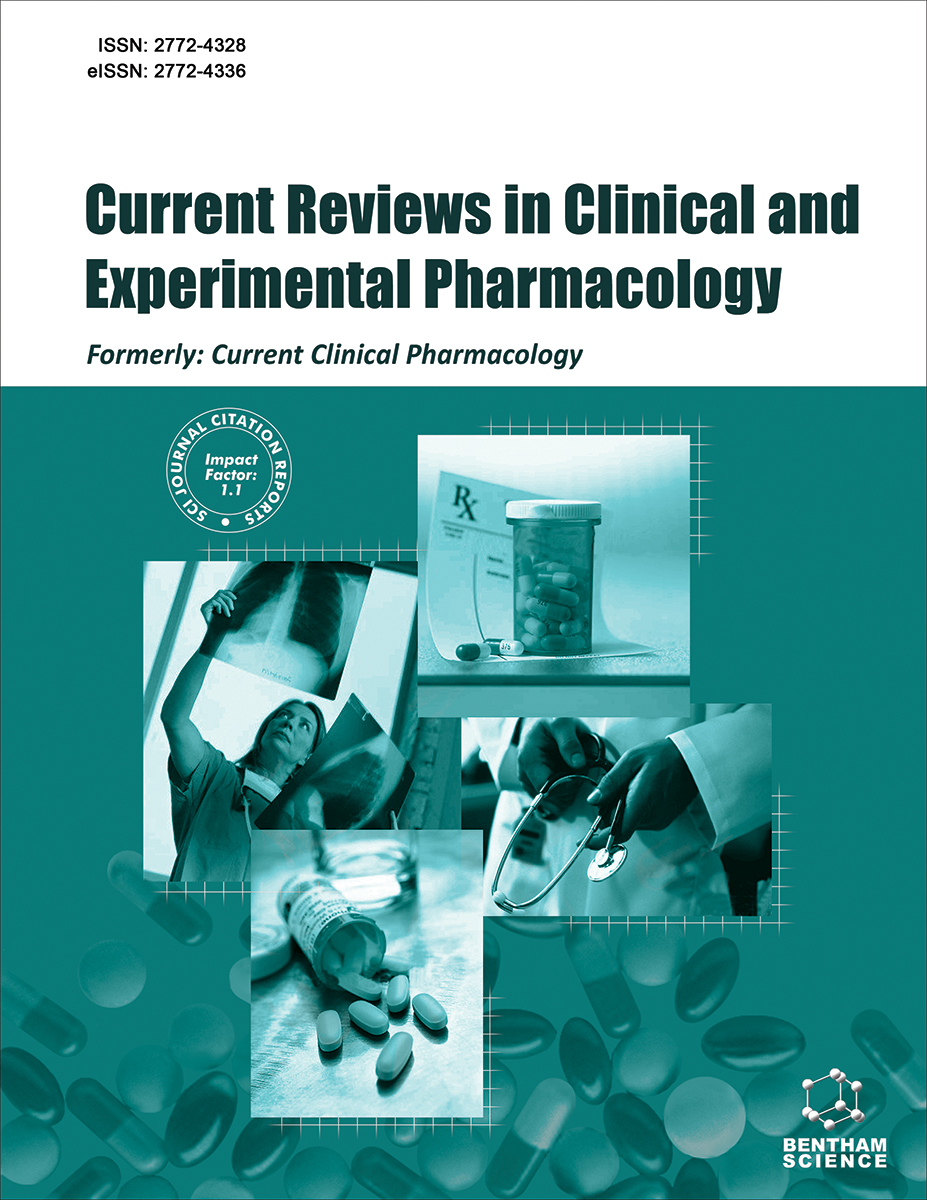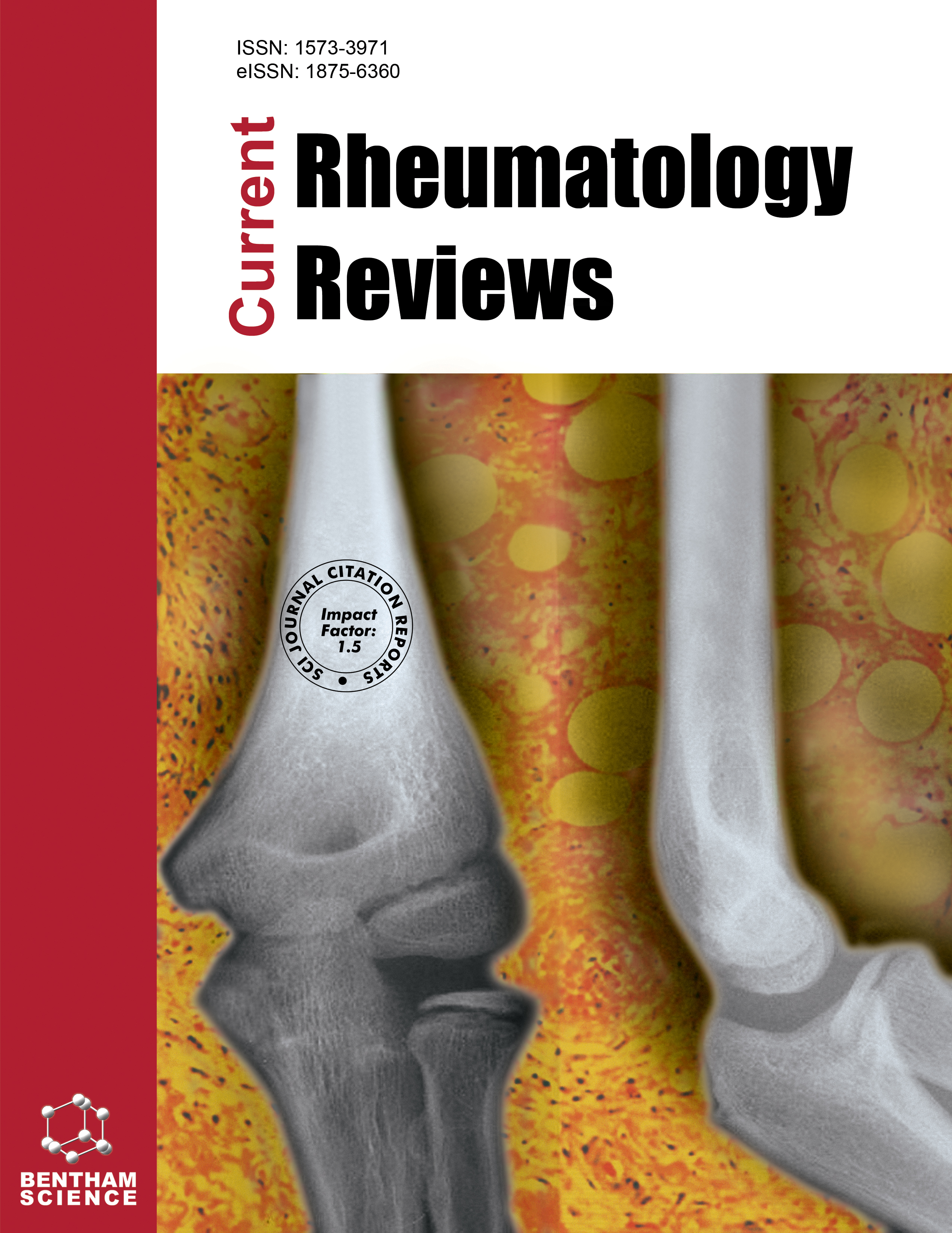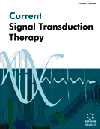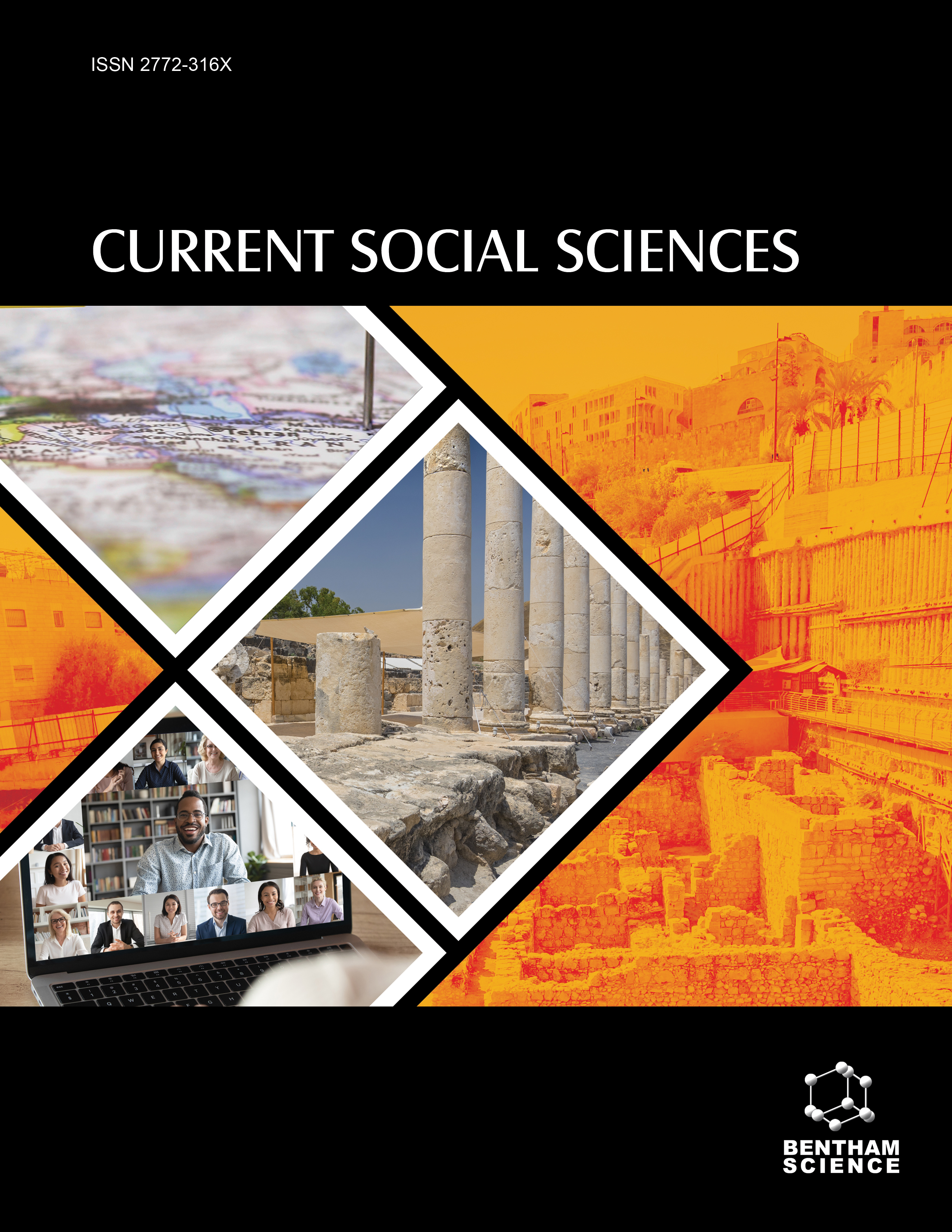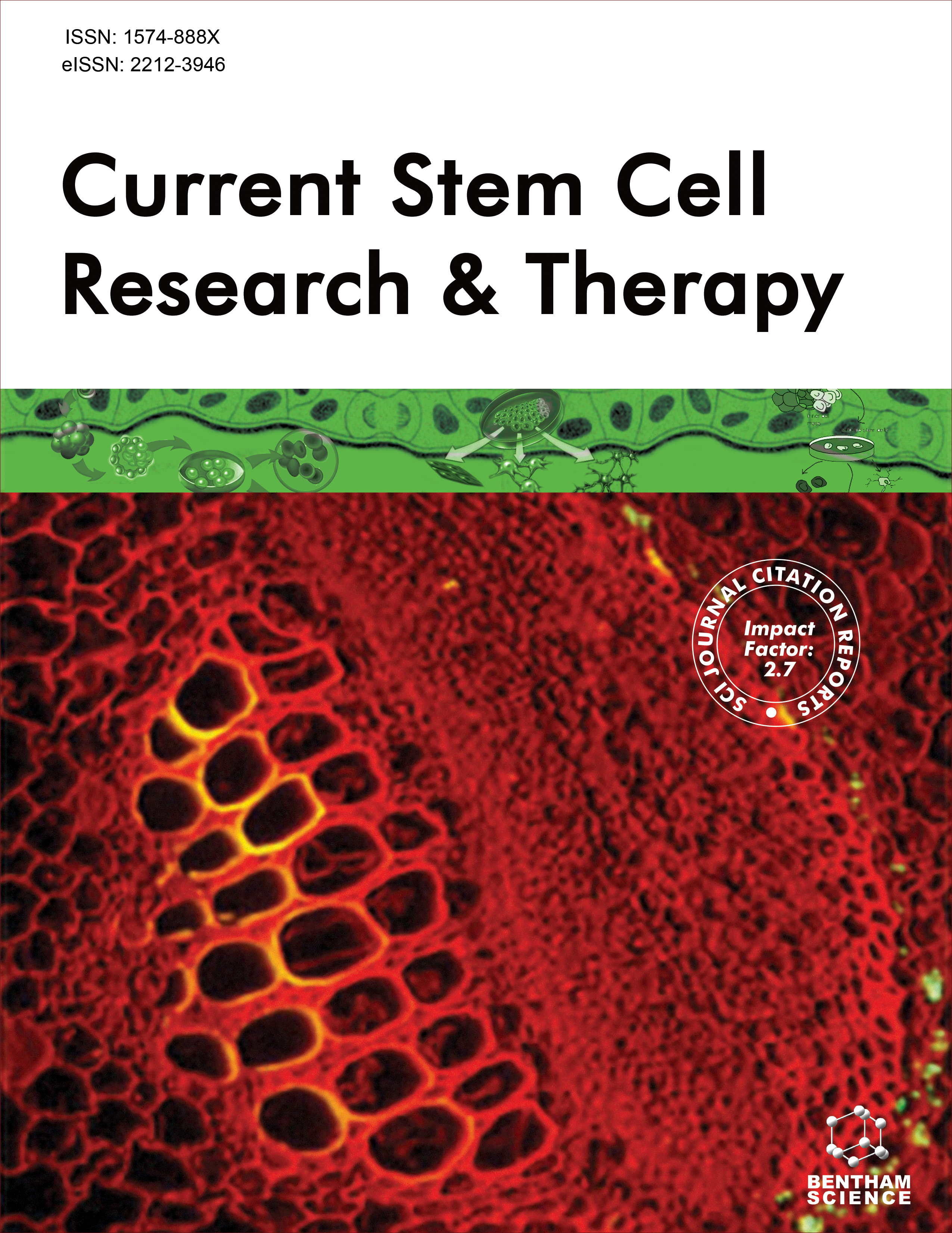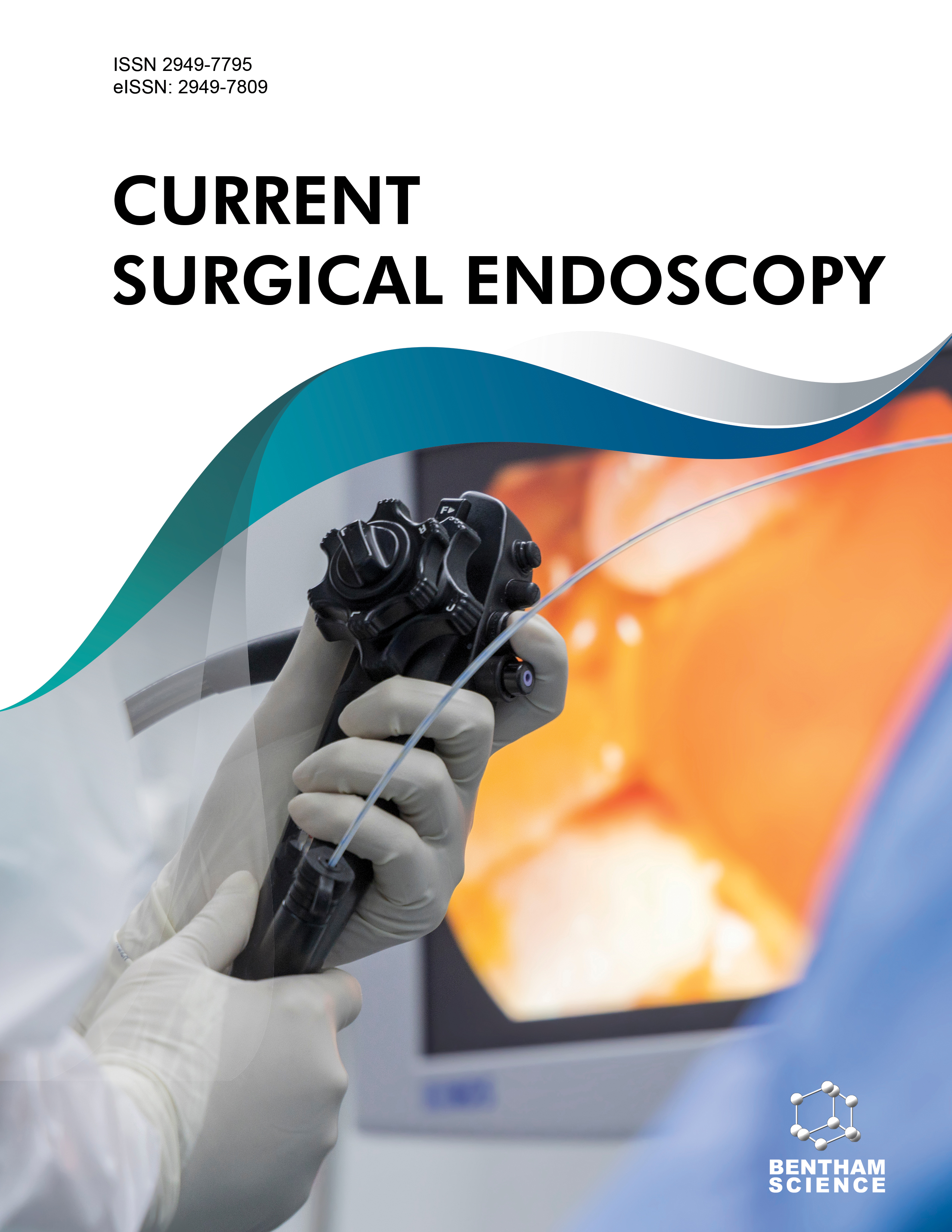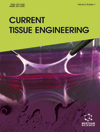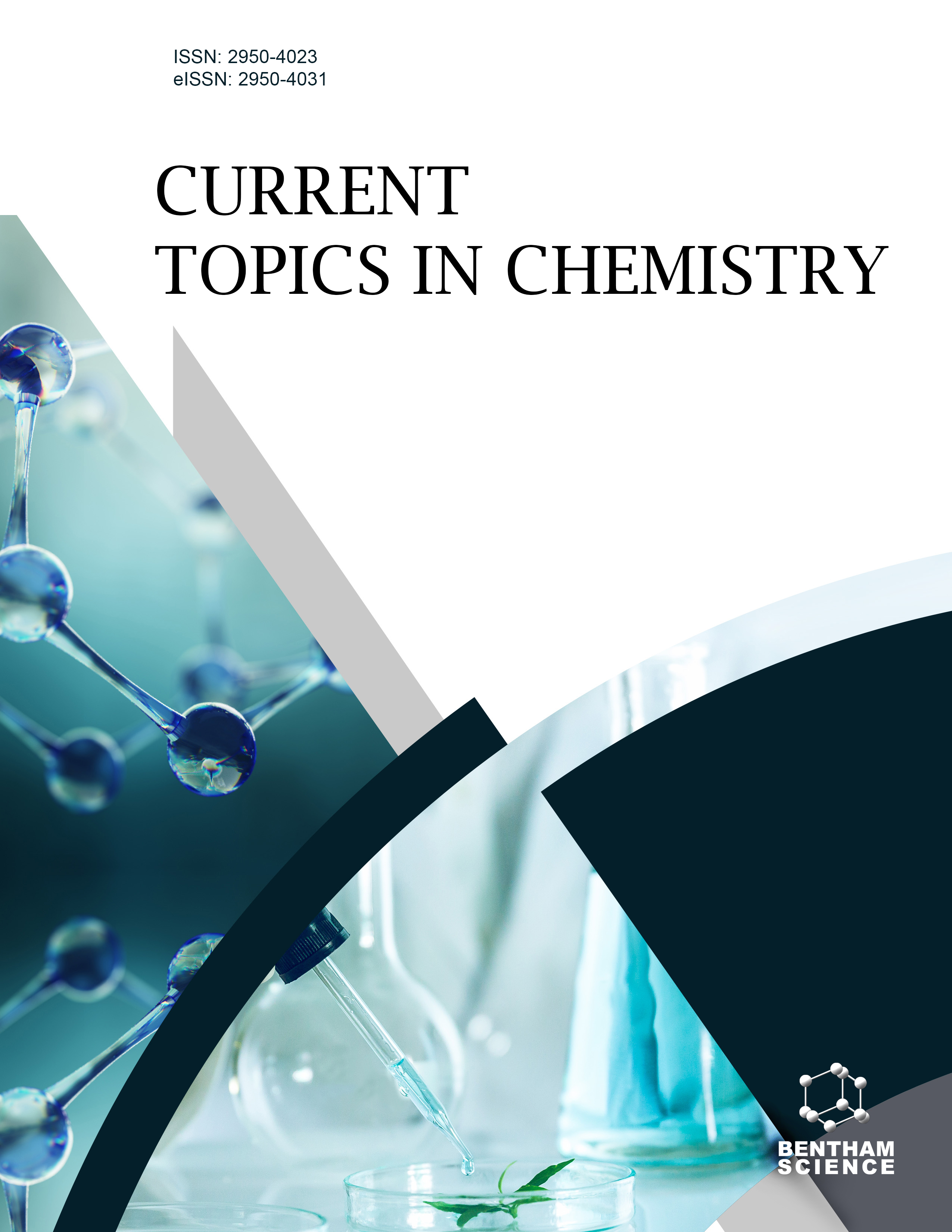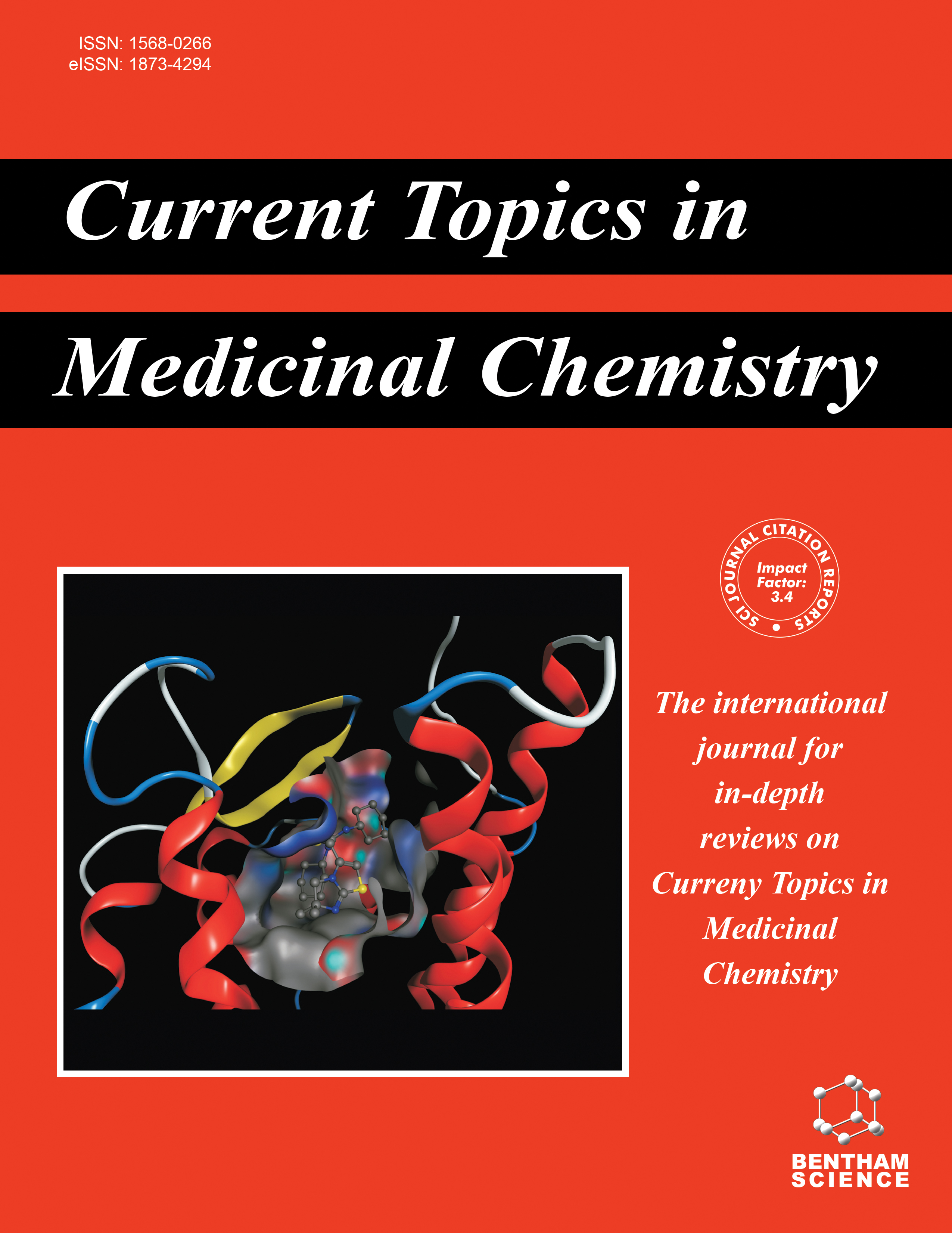- Home
- Publishers
- Bentham Science Publishers
Bentham Science Publishers
Bentham Science Publishers is a major publisher of more than 100 peer-reviewed science, technology and medical (STM) journals, along with a rapidly growing collection of eBooks. Since 1993, Bentham Science Publishers has been catering to the information needs of the pharmaceutical, engineering, biomedical and medical research community.1454
results
401 - 500 of 1454 results
-
-
Current Mechanics and Advanced Materials
More LessCurrent Mechanics and Advanced Materials is an international journal devoted to publishing peer-reviewed, high quality, original papers in the field of Materials science. The following article types are published: original research articles, reviews, thematic issues, editorials, letters, and conference reports.The journal welcomes, but not limited to, the papers from the following topics:Composite materialsCeramicsNew properties of m Read More
-
-
-
Current Medical Imaging
Formerly as Current Medical Imaging Reviews
More LessCurrent Medical Imaging publishes frontier review articles, original research articles, case reports, drug clinical trial studies, and guest- edited thematic issues on all the latest advances on medical imaging dedicated to clinical research. All relevant areas are covered by the journal, including advances in the diagnosis, instrumentation, and therapeutic applications related to all modern medical imaging techniques including but Read More
-
-
-
Current Medicinal Chemistry
More LessCurrent Medicinal Chemistry covers all the latest and outstanding developments in the field of medicinal chemistry. It also includes topics related to quantitative structure-function relationships, drug absorption, drug distribution, drug metabolism, new and emerging drug targets, pharmacogenomics, drug discovery toxicology, high-throughput screening, combinatorial chemistry, structural characterization and org Read More
-
-
-
Current Metabolomics
(Continued as Current Metabolomics and Systems Biology)
More LessCurrent Metabolomics publishes timely reviews, original research articles, thematic issues, and technical notes covering all aspects of the recent advancements and applications of metabolomics technology to systems biology, disease diagnosis, personalized medicine, and drug discovery. Original research articles and reviews in the following areas of metabolomics are of special interest to the readers of this journal:Applica Read More
-
-
-
Current Metabolomics and Systems Biology (Discontinued)
More LessCurrent Metabolomics and Systems Biology publishes full-length/mini reviews, original research articles, thematic issues, and technical notes covering all aspects of the recent advancements and applications of Omics technology to systems biology, disease diagnosis, personalized medicine, drug discovery, toxicity, nutrition and food, environmental studies, and functional genomics. While the journal emphasis meta Read More
-
-
-
Current Microwave Chemistry
More LessCurrent Microwave Chemistry is an international peer-reviewed journal that publishes important contributions describing advances in the use of the microwave in the fields of chemistry, biology, medicine, biomedical science, and engineering. The journal covers microwave-assisted synthesis of novel organic, organometallic and inorganic molecules or complexes, kinetics and mechanistic studies of microwave-induced chemical r Read More
-
-
-
Current Molecular Imaging (Discontinued)
More LessCurrent Molecular Imaging, publishes peer -reviewed expert review articles and special topic issues on all aspects of experimental and clinical research in molecular imaging. Topics include the technology and development of new imaging techniques, agents, molecular probes, model systems, clinical applications and new molecular diagnostics. The journal aims to be the leading forum for expert review articles in the field.
-
-
-
Current Molecular Medicine
More LessCurrent Molecular Medicine is an interdisciplinary journal focused on providing the readership with current and comprehensive reviews on fundamental molecular mechanisms of disease pathogenesis, the development of molecular-diagnosis and/or novel approaches to rational treatment. The reviews should be of significant interest to basic researchers and clinical investigators in molecular medicine. Periodically Read More
-
-
-
Current Molecular Pharmacology
More LessCurrent Molecular Pharmacology aims to publish the latest developments in cellular and molecular pharmacology with a major emphasis on the mechanism of action of novel drugs under development, innovative pharmacological technologies, cell signaling, transduction pathway analysis, genomics, proteomics, and metabonomics applications to drug action. An additional focus will be the way in which normal biological fun Read More
-
-
-
Current Nanomedicine
Formerly: Recent Patents on Nanomedicine
More LessCurrent Nanomedicine publishes full-length/mini reviews, research articles and guest edited thematic issues in the field of nanomedicine. The journal is essential reading for all academic, industrial and clinical researchers who wish to be kept informed about important breakthroughs in nanomedicine.
-
-
-
Current Nanoscience
More LessCurrent Nanoscience publishes (a) Authoritative/Mini Reviews, and (b) Original Research and Highlights written by experts covering the most recent advances in nanoscience and nanotechnology. All aspects of the field are represented including nano-structures, nano-bubbles, nano-droplets and nanofluids. Applications of nanoscience in physics, material science, chemistry, synthesis, environmental science, electronics, biomedica Read More
-
-
-
Current Neuropharmacology
More LessCurrent Neuropharmacology aims to provide current, comprehensive/mini-reviews. The reviews cover the fields of molecular, cellular, and systems/behavioural aspects of neuropharmacology and neuroscience. Moreover, position papers and research articles/clinical trials of great novelty and scientific interest might occasionally be considered for publication, along with guest-edited issues in all areas of neuropharm Read More
-
-
-
Current Neurovascular Research
More LessCurrent Neurovascular Research (CNR) provides a cross platform for the publication of scientifically rigorous research that addresses disease mechanisms of both neuronal and vascular origins in neuroscience. The journal serves as an international forum for the publication of novel and pioneering original work as well as timely neuroscience research reviews in the disciplines of cell developmental disorders, plasticity, an Read More
-
-
-
Current Nutraceuticals
More Less“Current Nutraceuticals” publishes original research articles, mini- and full-length reviews, feature articles, technical notes and thematic issues covering all aspects of nutraceuticals, from the isolation and comprehensive characterization of secondary metabolites and their synthesis to the biological activity of nutritional constituents and antioxidants, clinical, population, ethnological and agricultural studies. The journal also e Read More
-
-
-
Current Nutrition & Food Science
More LessCurrent Nutrition & Food Science publishes frontier research on recent advances in food and nutrition pertaining to their nutritional value, their impact on health and disease, and their molecular and biochemical actions. The journal aims to publish high-quality original research and full-length/mini-review articles, and thematic issues in the following areas:BrewingCereal ScienceClinical NutritionDairy ScienceDieteticsFood Read More
-
-
-
Current Organic Chemistry
More LessCurrent Organic Chemistry aims to provide in-depth/mini-reviews on the current progress in various fields related to organic chemistry, including bioorganic chemistry, organo-metallic chemistry, asymmetric synthesis, heterocyclic chemistry, natural product chemistry, catalytic and green chemistry, up-to-date synthetic approaches, flow chemistry, suitable aspects of medicinal chemistry and polymer chemistry, as well as a Read More
-
-
-
Current Organic Synthesis
More LessCurrent Organocatalysis is an international peer-reviewed journal that publishes significant research in all areas of organocatalysis. The journal covers organo homogeneous/heterogeneous catalysis, innovative mechanistic studies and kinetics of organocatalytic processes focusing on practical, theoretical and computational aspects. It also includes potential applications of organocatalysts in the fields of drug discovery, Read More
-
-
-
Current Organocatalysis
Organocatalysis and Synthetic Methods
More LessCurrent Organocatalysis is an international peer-reviewed journal that publishes significant research in all areas of organocatalysis. The journal covers organo homogeneous/heterogeneous catalysis, innovative mechanistic studies and kinetics of organocatalytic processes focusing on practical, theoretical and computational aspects. It also includes potential applications of organocatalysts in the fields of drug discovery, Read More
-
-
-
Current Pediatric Reviews
More LessCurrent Pediatric Reviews publishes frontier reviews/mini-reviews, clinical drug studies, and guest-edited thematic issues on all the latest advances in neonatal and pediatric medicine. The aim of the journal is to publish top quality review articles dedicated to clinical research in neonatology and pediatrics. The scope covers cardiology and respiratory systems, dentistry, dermatology, developmental behavior, gastroenterology, he Read More
-
-
-
Current Pharmaceutical Analysis
More LessCurrent Pharmaceutical Analysis publishes authoritative reviews, written by experts in the field on all the most recent advances in pharmaceutical and biomedical analysis. All aspects of the field are represented including drug analysis, analytical methodology and instrumentation. The journal is essential to all involved in pharmaceutical, biochemical and clinical analysis.
-
-
-
Current Pharmaceutical Biotechnology
More LessCurrent Pharmaceutical Biotechnology aims to cover all the latest and outstanding developments in Pharmaceutical Biotechnology. Each issue of the journal contains a series of timely in-depth reviews written by leaders in the field covering a range of current topics in both pre-clinical and clinical areas of Pharmaceutical Biotechnology. Current Pharmaceutical Biotechnology is an essential journal for academic, clinical, gove Read More
-
-
-
Current Pharmaceutical Design
More LessCurrent Pharmaceutical Design publishes timely in-depth reviews covering all aspects of current research in rational drug design. Each issue is devoted to a single major therapeutic area. A Guest Editor who is an acknowledged authority in a therapeutic field has solicits for each issue comprehensive and timely reviews from leading researchers in the pharmaceutical industry and academia.Each thematic issue of Curre Read More
-
-
-
Current Pharmacogenomics
More LessCurrent Pharmacogenomics provides comprehensive overviews of all current research on pharmacogenomics and pharmacogenetics. All areas of the field from pre-clinical to clinical research are covered, including related areas such as genomics, proteomics, target discovery, bioinformatics and novel diagnostics. This international journal is peer-reviewed and publishes both mini- and full review articles.The journal has becom Read More
-
-
-
Current Physical Chemistry
More LessCurrent Physical Chemistry publishes full-length and short reviews, and topical issues on the important recent developments in physical chemistry and allied disciplines.The scope of the journal covers all areas of physical chemistry, including surface science, colloids and interfaces, thermodynamics, spectroscopy, molecular structure, solid state chemistry, catalysis, kinetics, theoretical chemistry, chemical physics an Read More
-
-
-
Current Physics
More LessThe journal publishes original research articles, letters, case reports, reviews/mini-reviews, editorials, commentaries, perspectives, letters to the editor, and guest edited thematic issues in various topics related to physics.It is not limited to any one aspect of a specific field but focuses on a wide range of sub-fields within that field. Articles with interdisciplinary features are especially popular. Articles in the following fields are Read More
-
-
-
Current Probiotics
More LessThe journal is devoted to all aspects of science and technology of prebiotics and probiotics including functionalities and performance, analytical methodology, and applications relevant to humans, animals and plants. The topics covered include both fundamental and applied research areas such as:Analytical methodology related to chemistry, physics, physical chemistry, genomics, and so on.Clinical areas.Mechanisms of acti Read More
-
-
-
Current Protein and Peptide Science
More LessCurrent Protein & Peptide Science publishes full-length/mini review articles on specific aspects involving proteins, peptides, and interactions between the enzymes, the binding interactions of hormones and their receptors; the properties of transcription factors and other molecules that regulate gene expression; the reactions leading to the immune response; the process of signal transduction; the structure and function Read More
-
-
-
Current Proteomics
More LessResearch in the emerging field of proteomics is growing at an extremely rapid rate. The principal aim of Current Proteomics is to publish well-timed in-depth/mini review articles in this fast-expanding area on topics relevant and significant to the development of proteomics. Current Proteomics is an essential journal for everyone involved in proteomics and related fields in both academia and industry.All areas of proteomics are cov Read More
-
-
-
Current Psychiatry Research and Reviews
Formerly: Current Psychiatry Reviews
More LessCurrent Psychiatry Research & Reviews publishes peer-reviewed content including expert reviews, original research articles and single topic guest-edited issues dedicated to clinical research on all the latest advances in clinical psychiatry and its related areas, e.g. pharmacology, epidemiology, clinical care and therapy. The journal is essential reading for all clinicians, psychiatrists and researchers working in the field of psychiatry Read More
-
-
-
Current Psychiatry Reviews
More LessCurrent Psychiatry Reviews publishes frontier reviews on all the latest advances on clinical psychiatry and its related areas e.g. pharmacology, epidemiology, clinical care, and therapy. The journal's aim is to publish the highest quality review articles dedicated to clinical research in the field. The journal is essential reading for all clinicians, psychiatrists and researchers in psychiatry.
-
-
-
Current Psychopharmacology
More LessCurrent Psychopharmacology publishes peer-reviewed expert review articles and single topic guest edited issues on all aspects of pre-clinical and clinical research in psychopharmacology. The journal aims to be the leading forum for expert review articles in the field. The journal also accepts high-level original research articles on outstanding topics of preclinical and clinical psychopharmacology. Data must be published for the Read More
-
-
-
Current Radiopharmaceuticals
More LessCurrent Radiopharmaceuticals publishes original research articles, letters, reviews, drug clinical trial studies and guest edited issues on all aspects of research and development of radiolabelled compound preparations. The scope of the journal covers the following areas: radio imaging techniques, therapies; preparation and application of radionuclide compounds including the incorporation of tracer methods used in scie Read More
-
-
-
-
-
Current Respiratory Medicine Reviews
More LessCurrent Respiratory Medicine Reviews publishes frontier reviews on all the latest advances on respiratory diseases and its related areas e.g. pharmacology, pathogenesis, clinical care, and therapy. The journal's aim is to publish the highest quality review articles dedicated to clinical research in the field. The journal is essential reading for all researchers and clinicians in respiratory medicine.
-
-
-
Current Reviews in Clinical and Experimental Pharmacology
Formerly Current Clinical Pharmacology
More LessCurrent Reviews in Clinical and Experimental Pharmacology publishes full-length /mini-reviews, including high-quality narrative reviews, systematic reviews/meta-analyses, clinical trials, and guest-edited thematic issues on all the latest advances in the field of basic and clinical pharmacological research. This journal covers the following areas, namely pharmacokinetics, pharmacodynamics, novel drug targets and techniques, dru Read More
-
-
-
Current Rheumatology Reviews
More LessCurrent Rheumatology Reviews publishes frontier reviews on all the latest advances on rheumatology and its related areas e.g. pharmacology, pathogenesis, epidemiology, clinical care, and therapy. The journal's aim is to publish the highest quality review articles dedicated to clinical research in the field.The journal is essential reading for all researchers and clinicians in rheumatology.
-
-
-
Current Signal Transduction Therapy
More LessIn recent years a breakthrough has occurred in our understanding of the molecular pathomechanisms of human diseases whereby most of our diseases are related to intra and intercellular communication disorders. The concept of signal transduction therapy has got into the front line of modern drug research, and a multidisciplinary approach is being used to identify and treat signaling disorders.The aim of this journal is t Read More
-
-
-
Current Social Sciences
More LessCurrent Social Sciences, a peer reviewed journal, publishes original research articles, letters, reviews/mini-reviews and guest edited thematic issues in all areas of social science. The journal is an important and reliable source of current information on developments in the field. The emphasis will be on publishing quality articles that will be rapidly available worldwide. Topics covered in this interdisciplinary journal include:Anthropolo Read More
-
-
-
Current Spectroscopy and Chromatography
Formerly as Current Chromatography
More LessCurrent Spectroscopy and Chromatography is an international peer-reviewed scientific journal, that publishes full-length/mini-reviews, original research articles, and short communications in all core areas of fundamental and applied separation science, application of spectroscopy across all disciplines, including biology, chemistry, engineering, medicine, materials science, physics, and space science. Articles may contribute to Read More
-
-
-
Current Stem Cell Research & Therapy
More LessCurrent Stem Cell Research & Therapy publishes high quality frontier reviews, original research articles, drug clinical trial studies and guest edited issues on all aspects of basic research on stem cells and their uses in clinical therapy. The journal is essential reading for all researchers and clinicians involved in stem cells research. The scope of the journal covers the following topics including, but not limited to:Cancer Stem C Read More
-
-
-
Current Studies in HIV Research
Frontiers in HIV Research: Volume 2
More LessCurrent Studies in HIV Research brings key topics in HIV/AIDS research to the fore by compiling reviews prepared by HIV/AIDS experts. Readers will benefit from the extensive range of topics covered in this book. Each of the 24 chapters of this volume present a brief account of major facets of HIV/AIDS research including epidemiology, HIV prevention, basic virology, clinical studies (including co-infection with mycobacteria and h Read More
-
-
-
Current Surgical Endoscopy
More LessThe aim of Current Surgical Endoscopy is to promote excellence in the practice of endoscopic surgery and clinical research. Current Surgical Endoscopy is an international peer-reviewed, multi-disciplinary journal for physicians, clinicians, and scientists with interest in endoscopic surgery in orthopedics, neurological and spinal surgery, gastroenterology, otolaryngology, and interventional pain management. Current Surgical E Read More
-
-
-
Current Technologies To Increase The Transdermal Delivery Of Drugs
More LessThis e-book provides an overview of current technologies used to increase the topical/transdermal delivery of drugs, its protocols, advantages and limitations. It includes exclusive chapters on chemical enhancers, Iontophoresis, Sonophoresis, Electroporation, Microneedles and the more recent use of micro/nanoparticles to deliver drugs throughout the skin. The e-book's generalized approach on the topic is aimed to be helpful in Read More
-
-
-
Current Tissue Engineering (Discontinued)
More LessCURRENT TISSUE ENGINEERING is an international peer-reviewed journal, which publishes expert reviews, original research articles, drug clinical trial studies and thematic issues in all areas of tissue engineering research. The scope includes, scaffold materials and synthesis, assembly methods, tissue culture and regeneration, artificial organs, bioreactors, and stem cells.
-
-
-
Current Topics in Chemistry
Formerly as Current Chinese Chemistry
More LessCurrent Topics in Chemistry publishes original research articles, letters, reviews/mini-reviews, and guest-edited thematic issues dealing with various topics related to chemistry.Current Topics in Chemistry journal is not limited to a specific aspect of the field but is instead devoted to a wide range of subfields. Articles of a multi-disciplinary nature are particularly welcome. Submissions in the following areas are of special interest to t Read More
-
-
-
Current Topics in Engineering
Formerly as Current Chinese Engineering Science
More LessCurrent Topics in Engineering publishes original research articles, letters, case reports, reviews/mini-reviews, and guest-edited thematic issues dealing with various topics related to engineering.Current Topics in Engineering is not limited to a specific aspect of the field but is instead devoted to a wide range of sub-fields in the field. Articles of a multi-disciplinary nature are particularly welcome. Submissions in the following are Read More
-
-
-
Current Topics in Medicinal Chemistry
More LessCurrent Topics in Medicinal Chemistry is a forum for the review of areas of keen and topical interest to medicinal chemists and others in the allied disciplines. Each issue is solely devoted to in-depth mini-reviews/ research and guest-edited reviews/ research which provide the reader with a comprehensive survey of that respective area. A Guest Editor who is an expert in the topic under review will assemble each issue. The s Read More
-
-
-
Current Topics in Menopause
More LessMenopause is a significant event in a woman's life as is generally considered as an indicator for senescence in women. Evidence suggests that menopause results in many psychological and postmenopausal health problems, such as anxiety, osteoporosis, cardiovascular disease, metabolic disorder and others. Menopausal symptoms and associated disorders are of great importance for public health as they influence the qu Read More
-
-
-
Current Topics on Fetal 3D/4D Ultrasound
More LessA refreshing concise book on issues and considerations in current topics on fetal 3D/4D ultrasound. It is written for obstetricians, perinatologists, pediatricians, sonographers, midwives, psychologists, pediatric cardiologists, and advanced students who wish to increase their familiarity with recent advances on fetal 3D/4D ultrasound. Both clinical and research aspects are presented in this book. Many fetal 3D/4D sonographic Read More
-
-
-
Current Trends in the Identification and Development of Antimicrobial Agents
Frontiers in Antimicrobial Agents: Volume 2
More LessDespite an increase in life expectancy over the past 20 years, the number of novel, multi-drug resistant microorganisms has also risen dramatically. To reduce the risk of reemerging infections, and limit the spread of multidrug resistant microorganisms, it is urgently necessary to develop safe and effective therapeutic countermeasures. New antimicrobial chemicals are mostly produced with the help of microorganisms, and the bul Read More
-
-
-
Current Trends of Supercritical Fluid Technology in Pharmaceutical, Nutraceutical and Food Processing Industries
More LessSupercritical fluid technology can be seen as a green and environmentally friendly alternative to conventional. Current information on these topics is spread through different publications in different peer-reviewed journals. The editors were therefore of the opinion that this information should be gathered in an Ebook which presents some reviews on these topics which should be of major interest not only for the academia but also Read More
-
-
-
Current Trends on Glass and Ceramic Materials
More LessBiomaterials created from innovative glass and bioceramic research are emerging as a precursor to several developments useful for solving a wide variety of industry and health related issues. Current Trends on Glass and Ceramic Materials is a review on the latest developments in glass and ceramic materials for technological applications along with biomedical applications in vivo. The volume serves as a useful reference to r Read More
-
-
-
Current Vascular Pharmacology
More LessVascular disease is the commonest cause of death in Westernized countries and its incidence is on the increase in developing countries. It follows that considerable research is directed at establishing effective treatment for acute vascular events. Long-term treatment has also received considerable attention (e.g. for symptomatic relief). Furthermore, effective prevention, whether primary or secondary, is backed by the Read More
-
-
-
Current Women's Health Reviews
More LessCurrent Women's Health Reviews publishes frontier reviews on all the latest advances on obstetrics and gynecology. The journal's aim is to publish the highest quality review articles dedicated to research in the field. The journal is essential reading for all clinicians and researchers in the fields of obstetrics and gynecology.
-
-
-
Current and Future Developments in Food Science
Capillary Electrophoresis in Food Analysis: Volume 2
More LessThis reference describes recent advances and applications of capillary electrophoresis in the field of food science. The first two chapters are devoted to the fundamentals of capillary electrophoresis, and to the main sample preparation techniques used for food analysis using this miniaturized separation technique, respectively. These two introductory chapters are followed by several chapters focused on the differ Read More
-
-
-
Cutting Edge Techniques in Biophysics, Biochemistry and Cell Biology: From Principle to Applications
More LessAdvances in biomedical research have had a profound effect on human health outcomes over the last century. Biophysical, biochemical and cellular techniques are now the backbone of modern biomedical research. Understanding these laboratory techniques is a prerequisite for investigating the processes responsible for human diseases and discovering new treatment methods. Cutting Edge Techniques in Biophysics, Biochemistr Read More
-
-
-
Cutting Edge Therapies for Cancer in the 21st Century
More LessCancer is a broad group of diseases involving unregulated cell growth with elevated death rates as more people live in old age with mass lifestyle changes occurring in the world. The causes of cancer are diverse, complex, and still only partially understood. The chances of surviving the disease vary remarkably by the type and location of the malignancy and the extent of disease at the start of treatment. Early cancer detection i Read More
-
-
-
Cutting-Edge Solutions for Advancing Sustainable Development: Exploring Technological Horizons for Sustainability - Part 1
More LessCutting-Edge Solutions for Advancing Sustainable Development: Exploring Technological Horizons for Sustainability – Part 1 explores the transformative role of emerging technologies in driving global sustainability. This book highlights how artificial intelligence, machine learning, biotechnology, digitization, and smart city innovations contribute to tackling critical environmental and social challenges.Spanning multip Read More
-
-
-
Cyber Forensics and Investigation on Smart Devices
More LessThis book offers comprehensive insights into digital forensics, guiding readers through analysis methods and security assessments. Expert contributors cover a range of forensic investigations on computer devices, making it an essential resource for professionals, scholars, and students alike. Chapter 1 explores smart home forensics, detailing IoT forensic analysis and examination of different smart home devices. Chapte Read More
-
-
-
Cyber Physical Systems - Advances and Applications
More LessThe book gives a comprehensive overview of the evolving landscape of cyber-physical systems (CPS) with a primary focus on security challenges and innovative solutions. CPS, encompassing a wide array of applications from e-Health to smart grid and industry automation, is explored in depth through eight edited reviews. The book starts with an exploration of various threat detection and prevention techniques in IoT environm Read More
-
-
-
DFT Based Studies on Bioactive Molecules
More LessThis book is a guide for researchers, academics and experimentalists who wish to explore density functional theory (DFT) on selected molecular systems. The salient features of the book include concise and complete coverage of DFT on biologically active molecules, a basic guide to DFT for beginners followed by its computational application using a powerful Gaussian program. Subsequently, discussions on synthetic compou Read More
-
-
-
DFT-Based Studies On Atomic Clusters
More LessDFT-Based Studies On Atomic Clusters explores the structures, properties, and applications of a variety of atomic clusters using density functional theory (DFT) methods to offer a simple and comprehensive explanation of the subject.The book is organized into seven chapters. Chapter 1 introduces atomic clusters and provides a quick survey of density functional theory and its role in the study of atomic clusters. Chapter 2 Read More
-
-
-
Data Science and Interdisciplinary Research: Recent Trends and Applications
Advances in Computing Communications and Informatics: Volume 5
More LessData Science and Interdisciplinary Research: Recent Trends and Applications is a compelling edited volume that offers a comprehensive exploration of the latest advancements in data science and interdisciplinary research. Through a collection of 10 insightful chapters, this book showcases diverse models of machine learning, communications, signal processing, and data analysis, illustrating their relevance in various fields. K Read More
-
-
-
Data Science for Agricultural Innovation and Productivity
More LessData Science for Agricultural Innovation and Productivity explores the transformation of agriculture through data-driven practices. This comprehensive book delves into the intersection of data science and farming, offering insights into the potential of big data analytics, machine learning, and IoT integration. Readers will find a wide range of topics covered in 10 chapters, including smart farming, AI applications, h Read More
-
-
-
Deep Learning for Healthcare Services
IoT and Big Data Analytics: Volume 2
More LessThis book highlights the applications of deep learning algorithms in implementing big data and IoT enabled smart solutions to treat and care for terminally ill patients. It presents 5 concise chapters showing how these technologies can empower the conventional doctor patient relationship in a more dynamic, transparent, and personalized manner. The key topics covered in this book include: - The Role of Deep Learning in Healt Read More
-
-
-
Deep Learning: Theory, Architectures and Applications in Speech, Image and Language Processing
More LessThis book is a detailed reference guide on deep learning and its applications. It aims to provide a basic understanding of deep learning and its different architectures that are applied to process images, speech, and natural language. It explains basic concepts and many modern use cases through fifteen chapters contributed by computer science academics and researchers. By the end of the book, the reader will become f Read More
-
-
-
Degenerative Aortic Valve Disease, its Mechanism on Progression, its Effect on the Left Ventricle and the Postoperative Results
More Less"Degenerative aortic valve disease is the most prominent cardiac valve disease in Western societies. This volume describes some of the more important issues and problems for this condition: its progressive character and the underlying mechanisms of this progression diagnostic difficulties 1) ascertainment of valvular origin of symptoms in elderly; 2) the challenge of the low output - low gradient syndrome; 3) moderate aort Read More
-
-
-
Demystifying Emerging Trends in Green Technology
Emerging Trends in Computation Intelligence and Disruptive Technologies: Volume 3
More LessDemystifying Emerging Trends in Green Technology explores the transformative intersection of computational intelligence, disruptive technologies, and green innovations. This volume offers insights into diverse fields such as blockchain, IoT, artificial intelligence, machine learning, and sustainable development. Each chapter presents cutting-edge research and practical solutions addressing environmental sustainability, Read More
-
-
-
Demystifying Emerging Trends in Machine Learning
Emerging Trends in Computation Intelligence and Disruptive Technologies: Volume 2
More LessDemystifying Emerging Trends in Machine Learning (Volume 2) offers a deep dive into emerging and trending topics in the field of machine learning (ML). This edited volume showcases several machine learning methods for a variety of tasks. A key focus of this volume is the application of text classification for cybersecurity, E-commerce, sentiment analysis, public health and web content analysis.The 49 chapters highlight a wid Read More
-
-
-
Density Matrix Theories in Quantum Physics
More LessIn Density Matrix Theories in Quantum Physics, the author explores new possibilities for the main quantities in quantum physics the statistical operator and the density matrix. The starting point in this exploration is the Lindblad equation for the statistical operator, where the main element of influence on a system by its environment is the dissipative operator. Bondarev has developed the theory of the harmonic oscillator, in Read More
-
-
-
Depression: A Silent Culprit in Health and Disease
More LessDepression is considered as a complex problem with potentially serious economic consequences for affected individuals as well as public healthcare systems. There is much debate among laypersons, patients, academics and clinicians about the causes of depression, its clinical significance and the effect of conventional medical interventions such as antidepressants. This monograph showcases some aspects of depression throu Read More
-
-
-
Dermatological Treatments
More LessDermatological treatments have changed continuously throughout recent decades. Old drugs are recognized as being effective in new indications and new methods of dosage or application have been reported. Novel drugs have also changed the therapeutic approach in numerous diseases, improving patient health and quality of life. Conversely, new adverse reactions, drug interactions and unfamiliar risks have also increase Read More
-
-
-
Design and Construction of Buildings and Foundations with Illustrative Examples
More LessThis book is an essential guide to analysis and design of tall buildings and foundations. The book covers the basic consideration of tall buildings, selection of a suitable structural form, structural materials, and analytical methods for several types of construction loadings. The last chapter of this book presents an illustrated case study for learners. An appendix of different structural analysis calculations rounds up the book. Th Read More
-
-
-
Design of Analog Circuits through Symbolic Analysis
More LessSymbolic analyzers have the potential to offer knowledge to sophomores as well as practitioners of analog circuit design. Actually, they are an essential complement to numerical simulators, since they provide insight into circuit behavior which numerical analyzers do not provide.Symbolic analysis of electronic circuits addresses the generation of symbolic expressions for the parameters that describe the performance of lin Read More
-
-
-
Development and Application of Biomedical Titanium Alloys
More LessTitanium and its alloys have been widely used as biomedical implant materials due to their low density, good mechanical properties, superior corrosion resistance and biocompatibility when compared with other metallic biomaterials such as CoCr alloys and stainless steels. Recently, β-type titanium alloys have been increasingly considered as excellent implant materials because of the remarkable combination of high st Read More
-
-
-
Developmental and Stem Cell Biology in Health and Disease
More LessResearch into stem cells started in the 1960s with experiments on spleen cultures. Evans and Kaufman made a breakthrough in mouse embryo culturing and embryonic stem cell extraction in 1981, followed by the work of Thomson in 1998 on the technique for extracting human embryonic stem cells. Since then, stem cell research has rapidly expanded as a therapeutic avenue for different diseases in humans. This book expl Read More
-
-
-
Diabesity: A Multidisciplinary Approach
More LessDiabesity refers to the linkage of both diabetes and obesity that results in the coexistence of these 2 conditions. Research has identified pathophysiological mechanisms revolving around insulin resistance and hyperinsulinemia. Diabesity has important diagnostic and therapeutic implications.This book is a multidisciplinary review of diabesity. It highlights the various pharmacological methods of managing the condi Read More
-
-
-
Diabetes and the Eye: Latest Concepts and Practices
Diabetes: Current and Future Developments: Volume 2
More LessDiabetes and the Eye familiarizes the reader with the relationship between diabetes mellitus and the visual system. It presents a discussion about the diabetes epidemic and the many ways the disease can cause vision loss, with several types of vision disorders covered in separate chapters. Information about new frontiers in the treatment of ophthalmic disorders is also presented to reflect the advances being made in the cli Read More
-
-
-
Diagnosis And Treatment In Rheumatology
More LessDiagnosis and Treatment in Rheumatology is a clear and concise handbook of all rheumatic diseases. The book presents organized information about current diagnosis, treatment and statistics (where available) of diseases such as rheumatoid arthritis, spndyloarthropathies, gout, systemic lupus erythromatosis, osteoarthritis, myositis and much more. This reader friendly format and up to date information is easily accessible Read More
-
-
-
Diagnosis and Management of Fetal Disorders
More LessDiagnosis and Management of Fetal Disorders reviews key points in obstetrics/maternal fetal medicine imagery analysis of the pregnant uterus and its contents. Specifically, chapters cover ultrasound of different fetal organs, physiological systems and diseases. The authors also provide radiological correlation to help the obstetrician, pediatrician, radiologist, and other specialists know the basics and some more advanced Read More
-
-
-
-
-
Diagnostic Atlas of Retinal Diseases
Ophthalmology: Current and Future Developments: Volume 2
More LessThis 3 volume set offers a comprehensive compilation which presents detailed information about ophthalmic (retinal, vitreous and macular) diseases. Key features of this set include: o Emphasis on practical features of clinical diagnosis o Concise and didactic presentation of key manifestations of diseases designed for rapid reference and target recall o A vast selection of illustrations to sharpen clinical problem-so Read More
-
-
-
Diagnostic Atlas of Retinal Diseases
Ophthalmology: Current and Future Developments: Volume 3
More LessThis 3 volume set offers a comprehensive compilation which presents detailed information about ophthalmic (retinal, vitreous and macular) diseases. Key features of this set include: o Emphasis on practical features of clinical diagnosis o Concise and didactic presentation of key manifestations of diseases designed for rapid reference and target recall o A vast selection of illustrations to sharpen clinical problem-so Read More
-
-
-
Diagnostic Technologies in Ophthalmology
More LessThis E-book provides the reader with a detailed up-to-date review of diagnostic technologies and their role in clinical practice. Chapters are dedicated specifically to describe the role of current technologies in the management of the leading causes of visual impairment such as age-related macular degeneration, diabetic retinopathy, glaucoma, vitreo-retinal disorders, cornea and anterior segment diseases. This E-bo Read More
-
-
-
Differential and Integral Calculus Theory and Cases
More LessDifferential and Integral Calculus - Theory and Cases is a complete textbook designed to cover basic calculus at introductory college and undergraduate levels. Chapters provide information about calculus fundamentals and concepts including real numbers, series, functions, limits, continuity, differentiation, antidifferentiation (integration) and sequences. Readers will find a concise and clear study of calculus topics, g Read More
-
-
-
Digital Currency: An International Legal and Regulatory Compliance Guide
More LessDigital or virtual currencies pose significant challenges for government, financial and legal institutions because of their non-physical nature and their relative anonymity to physical currency. These attributes make this form of exchange extremely volatile and, at the same time, attractive to criminals. Many countries around the world have, therefore issued warnings against the use of digital currencies and have enacted laws Read More
-
-
-
Digital Economy, Sustainability and International Economic Law
Current and Future Developments in Law: Volume 3
More LessThis volume reviews issues that address the interconnection between digital economy, sustainability and international economic law. It covers a range of topics, including renewables subsidies, AI and corporate governance, digital currency, dispute resolution and new developments in trade law. The selection of chapters intends to illustrate how the digital economic, sustainable development goals and arrangements could infl Read More
-
-
-
Digital Innovation Adoption: Architectural Recommendations and Security Solutions
More LessThis reference reviews the architectural requirements of IT systems that are designed to digitally transform business operations. It is a compilation of 7 timely reviews that demonstrate how adopting emerging technologies and examining the security-based concerns can lead to innovation in the business sector. The aim of the book is to guide scholars and business consultants on IT and business frameworks that can help new and Read More
-
-
-
Digital Transformation in African SMEs: Emerging Issues and Trends
Advanced Computing Techniques: Implementation, Informatics and Emerging Technologies: Volume 2
More LessThis 2 volume set aims to shed light on the various advantages and drawbacks of the same along with the opportunities and markets that are emerging because of digital transformation. This volume encompasses diverse perspectives on the digital landscape for Small and Medium Enterprises (SMEs). It delves into the use of digital tools like Big Data, IoT, AI, and ML in Chapter 1, followed by an exploration of factors i Read More
-
-
-
Digital Transformation in African SMEs: Emerging Issues and Trends
Advanced Computing Techniques: Implementation, Informatics and Emerging Technologies: Volume 3
More LessThis 2 volume set aims to shed light on the various advantages and drawbacks of the same along with the opportunities and markets that are emerging because of digital transformation. This volume encompasses diverse perspectives on the digital landscape for Small and Medium Enterprises (SMEs). It delves into the use of digital tools like Big Data, IoT, AI, and ML in Chapter 1, followed by an exploration of factors i Read More
-

